FiiO’s maturity and expertise are evident in its top-dog desktop DAC/amp.
FiiO has grown up and become serious.
I mean, just look at their latest audio offerings. All black aluminum with chamfered edges. No nonsense buttons. Gold highlights. There’s nary a cute anime mascot to be found.
And their performance is just as thoughtful as the current design language.
I recently reviewed the portable DAC/amp, the BTR7, and – spoiler alert – I really like it. Now I’m looking at the BTR7’s big desktop brother, the K9 Pro ESS. The Pro ESS is the successor to the K9 Pro, this time with, you guessed it, an ESS Sabre chipset DAC.
FiiO’s products have upsized as well with the release of the K9 Pro models. This is one hefty beastie.
- Generous input and output options
- Clever integration of an OTG USB-c port
- Decent power for most headphones
- Silent background
- Lots of connectivity and adjustment options
- App support enables EQ
- Clean, clear, sound
- High-resolution Bluetooth codec support
- Included vertical stand
- No support for the highest sampling rates
- More power output may be required to get the best out of the most inefficient headphones
- The front panel labels are very difficult to read (changed on new version)
- A remote control is not included
Make no mistake, the K9 Pro ESS is intended to be an end-game, all-in-one, do-it-all device. With 2.1W of output power, balanced and SE inputs and outputs, Bluetooth high-definition codec support, MQA decoding, and a phone app with EQ, there isn’t much this audio box can’t do.
Perhaps it’s obvious why the K9 Pro ESS deserves a spot on Headphonesty’s ‘Best Desktop DAC/Amp’ list. Much like its little portable brother, the BTR7, flexibility is the name of the game with the K9 Pro ESS. These impressive products are the current TOTL offerings from this prodigious company, and it shows.
Company Overview
Guangzhou FiiO Electronics Technology Co., Ltd. (FiiO for short) was established in 2007 in Guangzhou City, China. FiiO has developed many portable music products, including high-resolution digital audio players, portable headphone amplifiers, DACs, and earphones. FiiO adheres strictly to ISO9001 standards in quality management and, according to the website, works hard to attain the lowest repair-related product returns rate.
FiiO strives to bring innovation, quality, and great service to affordable audio products and positions itself as “HiFi with style.”
Technical Specifications
- Form: Desktop DAC Amp
- DAC Chipset: ES9038PRO x2
- Amp Chipset: THX AAA 788+ x2
- Bluetooth Chipset: QCC5124
- USB Chipset: USB: XMOS XUF208
- Digital Inputs: USB-A, USB-c, coaxial, optical, Bluetooth 5.0
- Sample Rate Support: 384kHz-32bit/DSD256 (USB), 192kHz-24bit (coaxial), 96KHz-24bit (optical)
- Analog Input: RCA
- Analog Output: RCA, 3-pin XLR x2, 4-pin XLR (balanced), 4.4mm (balanced), 6.53mm (SE)
- Recommended Headphone Impedance: 16~600 Ω
- Output Power: 2.1W @16Ohms (SE), 281mW @300Ohms (SE), 2.1W @32Ohms (balanced), 1.1W @300Ohms (balanced)
- THD+N: ≤0.00025%
- SNR: ≥129dB
- Weight (g): 2750g
- Dimensions: 200 x 220 x 70mm
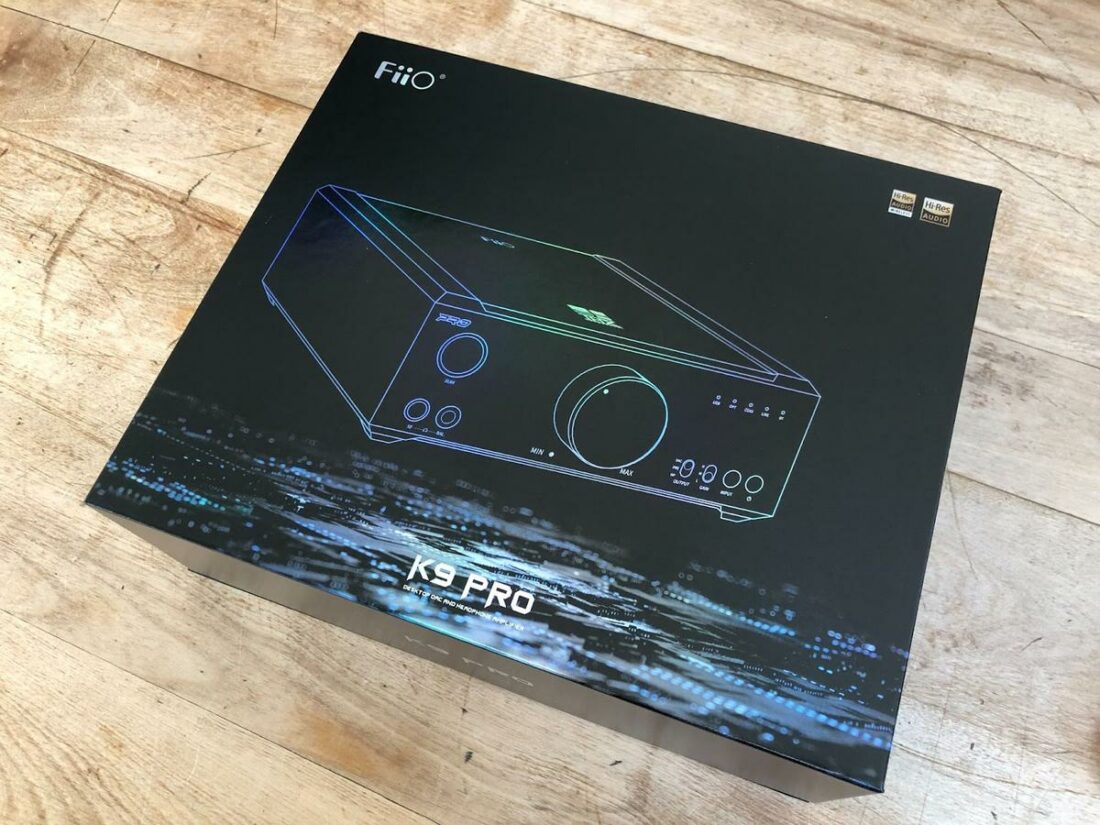
Packaging
Rainbow-hued silver lines on black boxes highlight modern FiiO product packaging. The only thing new about the K9 Pro ESS box is its larger size. The packaging does a good job of feeling premium, and the general aesthetic matches the device’s design.
Inside the box are the accessories, including such unusual but welcome additions as a replacement fuse and vertical stand. I approve, as some other companies charge outlandish fees for vertical stands.

In the box
- K9 Pro ESS DAC/amp
- USB-a to USB-b cable
- Bluetooth antenna
- Adhesive feet x6
- Front panel label stickers x2
- Vertical stand
- Power cable
- Replacement fuse
- 6.35mm to 3.5mm adapter
- Quick start guide
- Warranty card
I’m divided on the included adhesive feet. I assume that FiiO decided against permanently mounted feet in case the user selects vertical orientation, but somehow, sticking the feet on myself decreases the premium feel.
A small remote control is the only thing notably missing from a TOTL device such as this one. To be honest, I never use a remote if the amp sits within arm’s distance, but if used as a preamp for speakers, I can see why folks might want one.
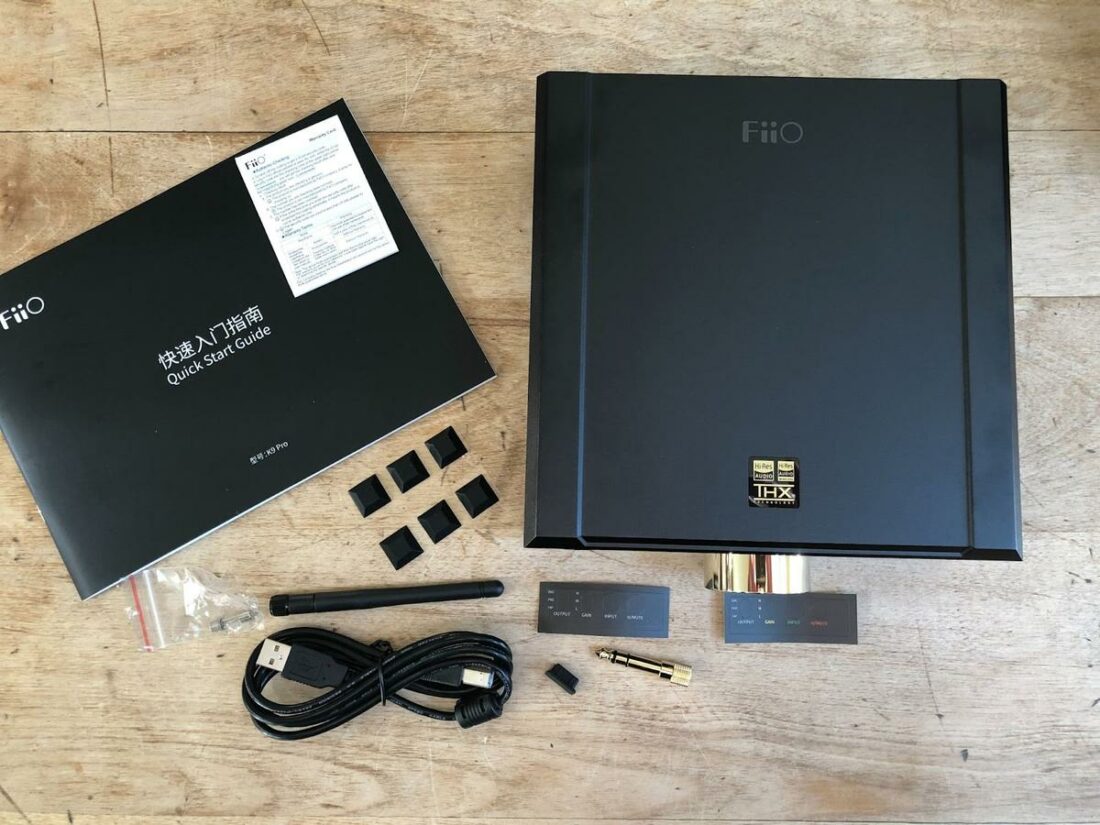
Design
The K9 Pro ESS is a 200x220x70mm, heavy-weight, with a black aluminum sleeve. The front and back plates are only distinguishable by the subtle seam around the perimeter. All edges are nicely chamfered, with attractive raised ridges running back along the flanks. Both sides have cooling vent slots.
The heavy (2750g) weight is appreciated as the unit stays in place on your desktop regardless of what sort of garden-hose cables you decide to connect to it.
One design decision puzzles me and is my most significant complaint regarding usability. The white writing on the bottom and back of the device (where you seldom look) is bright and easily legible. So far, so good.
On the other hand, the button and indicator labels on the front and the FiiO logo on the top are light grey in color. Compounding the issue, the labels are printed in a teeny tiny font. In other words, the writing is nearly invisible unless in direct light and close-up.
FiiO clearly recognized this error and included two label decals for the buttons in the box. Unfortunately, this doesn’t help with the input LED indicators and will look somewhat janky at best.
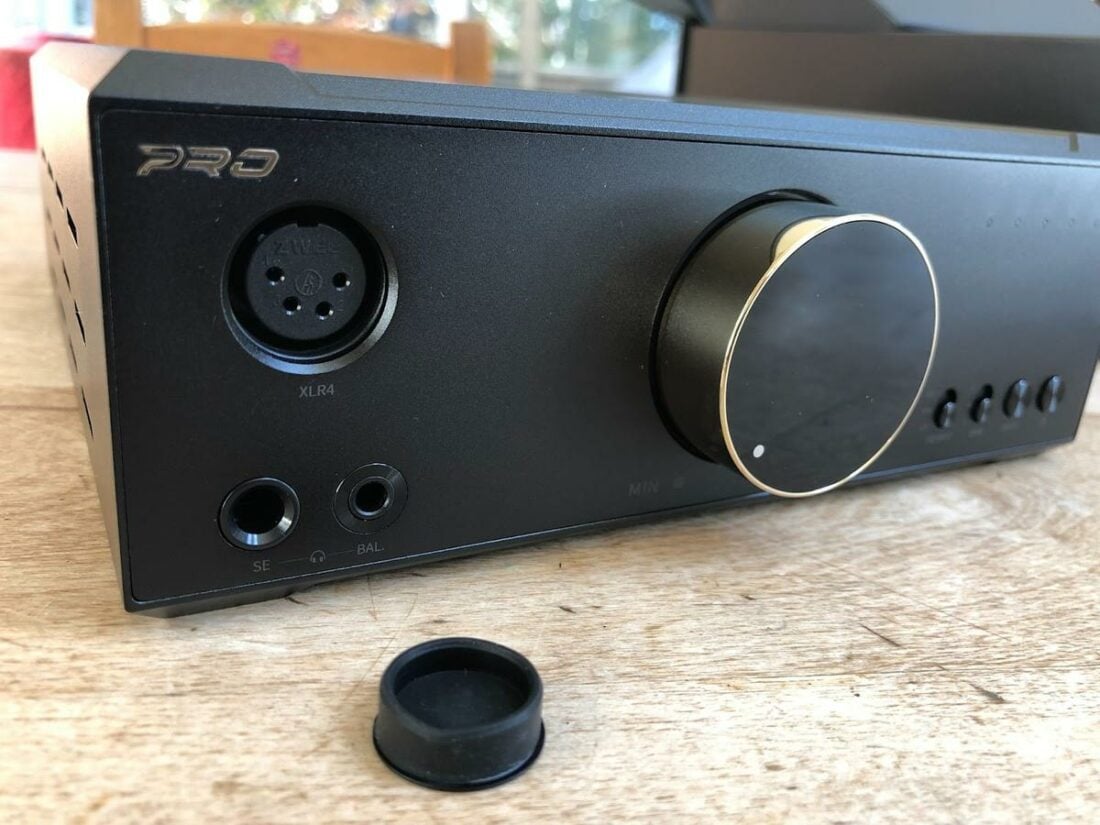
Besides the nearly indecipherable labels, the front panel contains the 4-pin XLR, 4.4mm, and 6.35mm headphone jacks on the left. A large, shiny, gold-plated volume knob dominates the center – which looks great until you touch it and leave the inevitable fingerprints all over the mirror surface.
Turning the volume knob will also power on the K9 Pro ESS. Around the knob is a multi-hued led ring that changes colors depending on the sampling rate, file format, and Bluetooth codec. Thankfully, it’s far subtler and more tasteful in person than that sounds.
The right side has five small white LED indicators for the selected input, an output switch (DAC, Pre, Headphone), a gain switch (high, medium, low), an input selector button, and a soft standby power button.
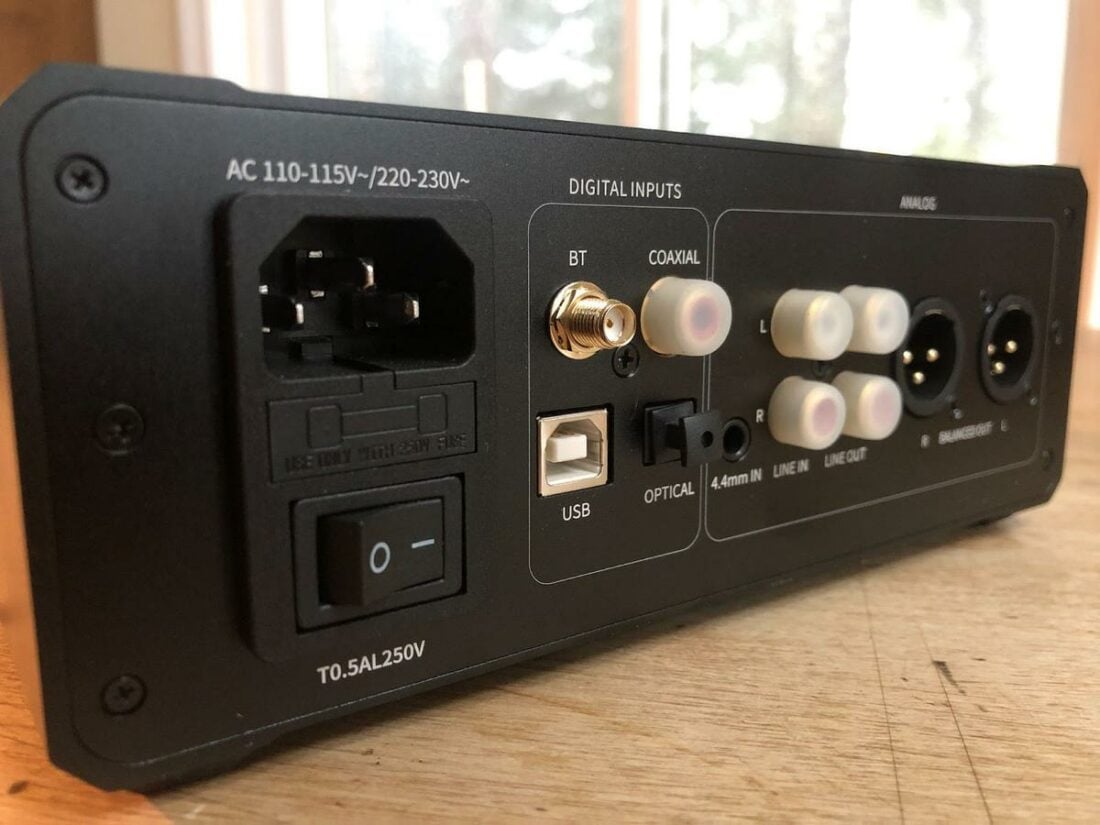
The back panel is well-appointed with an IEC c13 power socket, master power switch, digital inputs (Bluetooth antenna port, coaxial, optical, and USB-a), analog inputs (4.4mm and RCA), and analog outputs (RCA and dual 3-pin XLR).
Another well-thought-out – and unusual – feature is the USB-c port on the right-side panel near the front, intended for an OTG connection.
I have experience with many desktop DACs and amps, and the build quality of the K9 Pro ESS feels superior to just about all of the competition. It reminds me of devices costing twice as much, with connectivity options bettering many more expensive models.
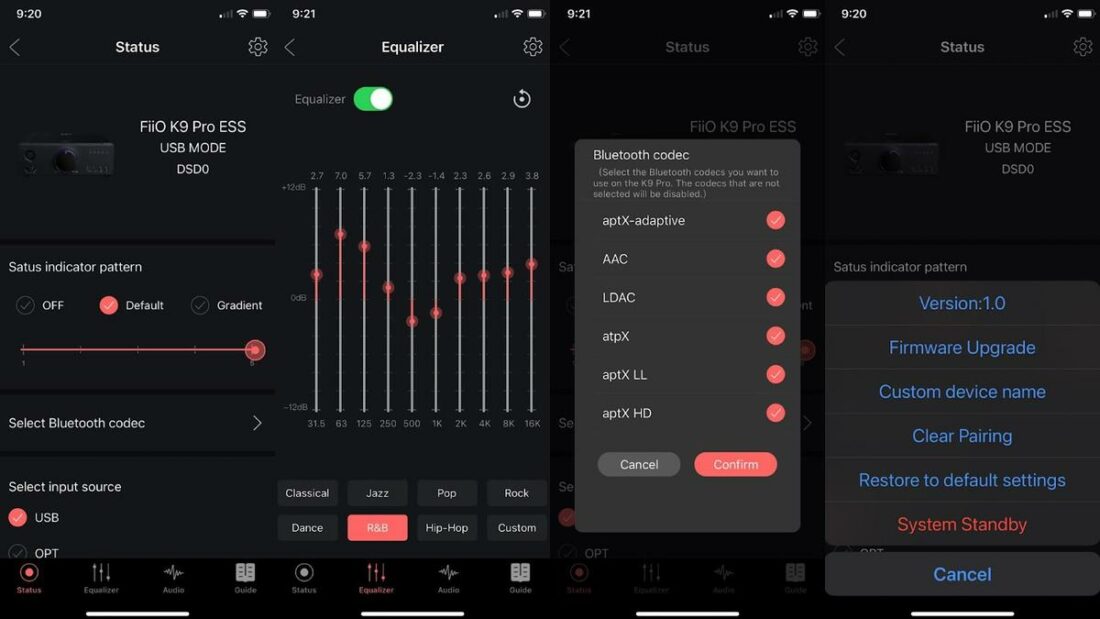
FiiO Control application
The universal FiiO Control application works with several of their current devices, including the BTR7 and K9 Pro ESS. Application integration is relatively rare for desktop devices, and it’s great to see that the app unlocks features, such as an EQ, that wouldn’t be available otherwise.
The multi-color volume knob LED ring can be disabled or dialed to the user’s preferred brightness. Inputs can be selected, Bluetooth codecs can be disabled, lowpass filters set, and there is an option for adjusting the balance.
While it’s a relatively thin list of available options, simply having an app beats the competition.
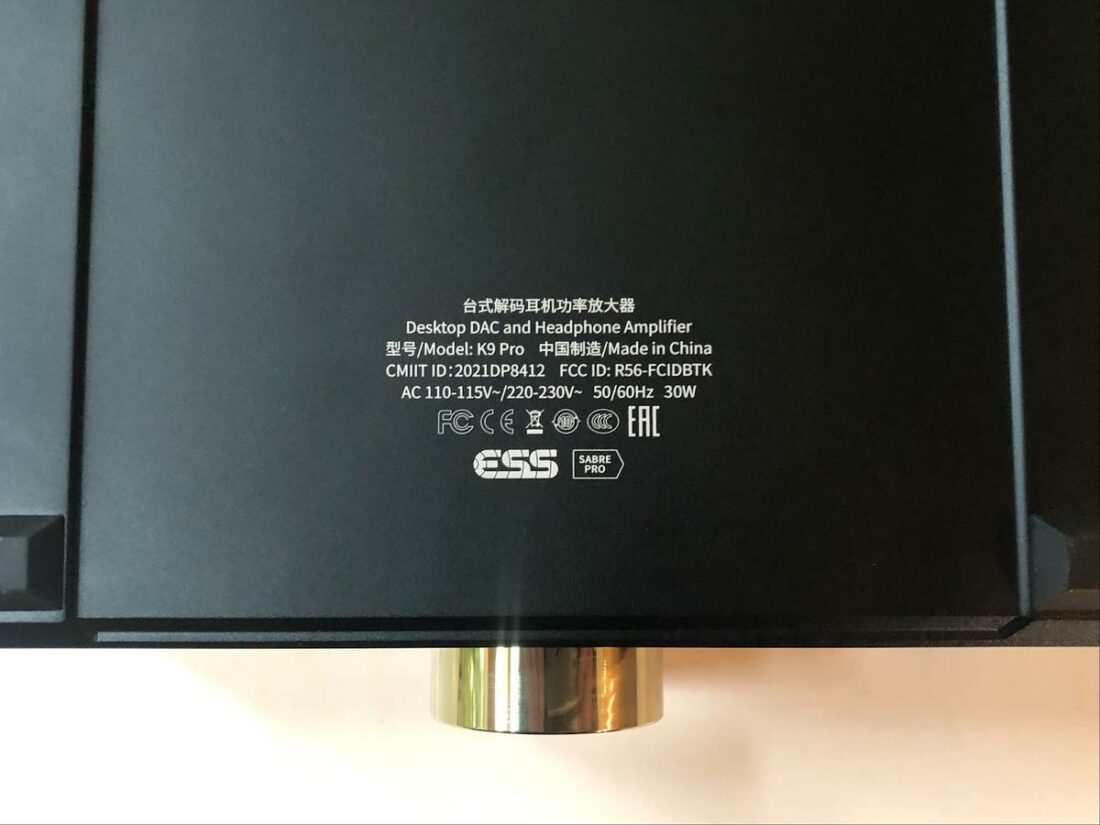
Internals
The innards of the K9 Pro ESS are just as impressive as the exterior. FiiO went with a no-holds-barred approach to the design and seemingly incorporated any upgrade that they felt would improve performance.
The dual ES9038 PRO chipset is implemented in dual-mono current mode within the K9 Pro ESS.
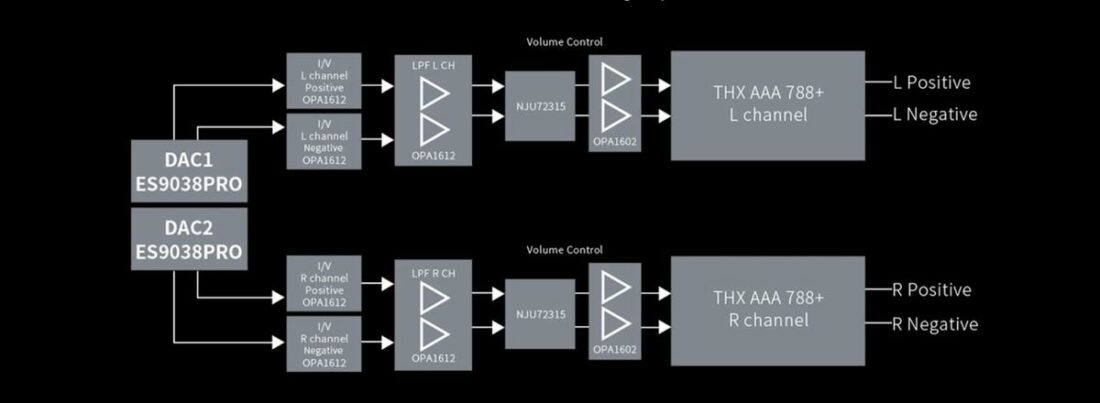
Power comes from an internal toroidal linear power supply with high-end Nichicon capacitors and isolated digital and analog power circuits.
Bluetooth
The Qualcomm QCC5124 Bluetooth 5.1 chipset supports up to 24/96kHz LDAC streaming, as well as SBC, AAC, and AptX LL/HD/Adaptive. It functions just as well as any Bluetooth receiver I’ve ever used, with excellent reception, even through multiple walls, and as much clarity and stability as you can expect from a wireless connection.
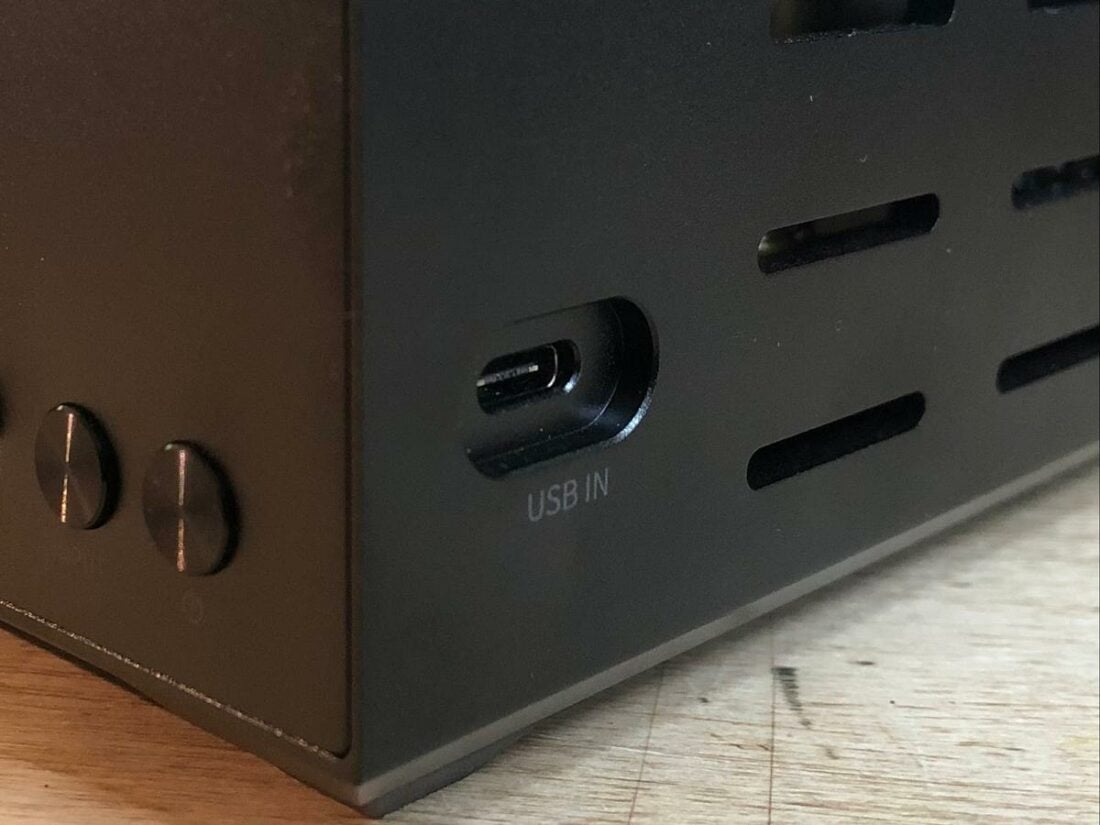
Power
The amplifier circuitry comprises dual THX AAA-788+ modules capable of a maximum output power of 2.1W @32 Ohms through the balanced headphone connections. Output impedance is <1 Ohm, THD+N is ≤0.00025%, and the SNR is ≥129dB. Additionally, there is a three-setting (low, medium, high) gain switch to tailor the output.
This means that there is plenty of power for almost any pair of headphones, while the most highly efficient IEMs have no audible noise floor.
The THX feed-forward amplifier design is excellent at reducing unwanted noise.
The recent arrival of the HiFiMan HE6se v2, a notoriously difficult-to-drive pair of headphones (impedance: 50 Ohms, sensitivity: 83.5dB), proved the perfect test for the amplification power limits of the K9 Pro ESS.
These headphones require an unusual amount of amplifier grunt, and many owners swear that using speaker amplifier amps is the way to go for additional headroom. HiFiMan suggests a minimum of 2W of amplifier power output.
Using the balanced output, the HE6se v2 require high gain (no surprise there), and the usable volume is found between 10:00 and 3:00 on the dial, verging from silent to too loud.
The output power proves just sufficient for the HE6SE v2, and dynamics and sound quality are not quite in the same league as what I hear with the more powerful (and expensive) Burson Conductor 3R.
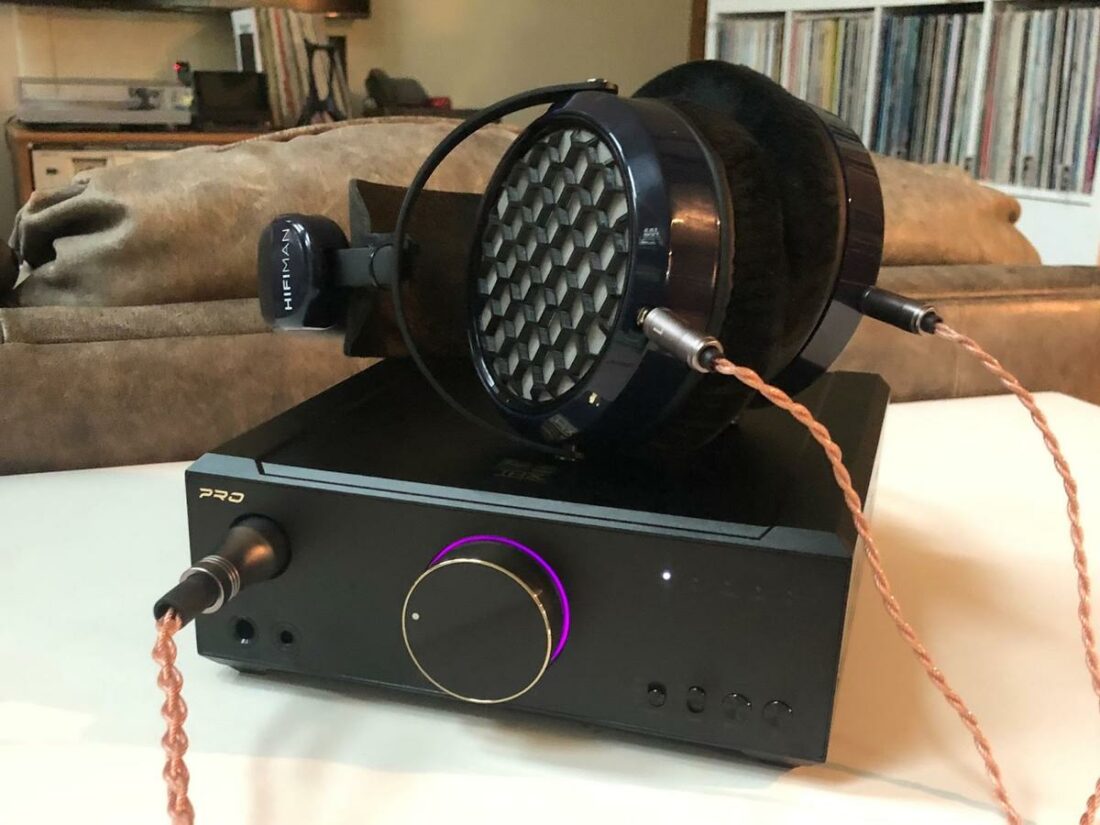
FiiO K9 Pro ESS Sound
I remarked in my review that the clean and powerful output makes the BTR7 easy to pair with most headphones and IEMs. This declaration, of course, goes double for the K9 Pro ESS, which has nearly six times the output power of the small portable device.
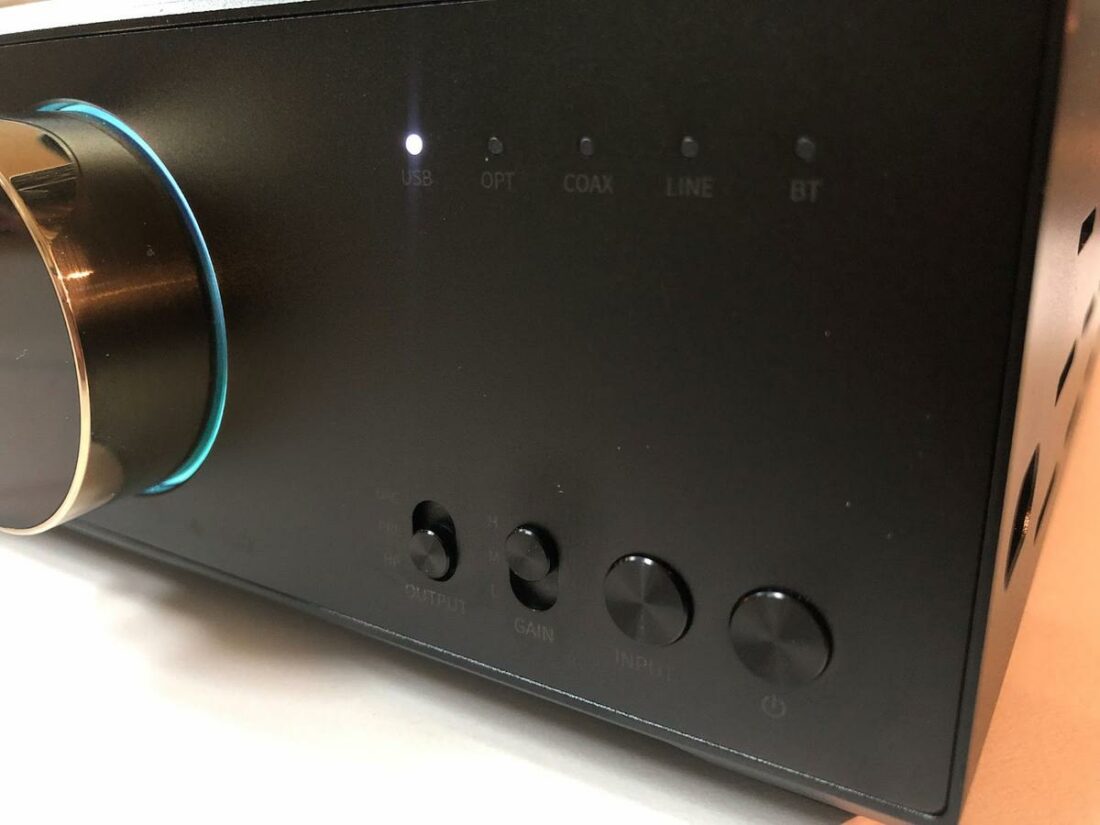
Detail and resolution are excellent, and the music seems fully reproduced. Dynamics are full, fast, and dramatic with full-sized planar headphones. Yet, even with sensitive IEMs, the background remains silent.
I’m hard-pressed to say there is much to gain in amplifier or DAC performance beyond the K9 Pro ESS.
At times, I’ve found that a feed-forward amplifier design can feel more sterile and less powerful than a full Class-A amplifier. I’ve had mixed results with some of the less expensive Topping and SMSL models that, while impressive at their price point, can sound a little thin with more demanding headphones.
The K9 Pro ESS doesn’t seem to suffer from this weakness, likely attributable to the high-quality power supply and power distribution circuitry combined with the specially tailored THX amplifier chips. Whatever the case, FiiO seems to have discovered the magic with this DAC/amp combo.
As expected from the proper implementation of the TOTL ESS DAC chips, using the K9 Pro ESS in DAC-only mode, outputting analog line-level to another amplifier shows no weakness. The DAC appears completely transparent, uncolored, and resolving, with no glare or harshness, sometimes attributed to ESS chipsets.
The K9 Pro ESS sounds great. Full stop.
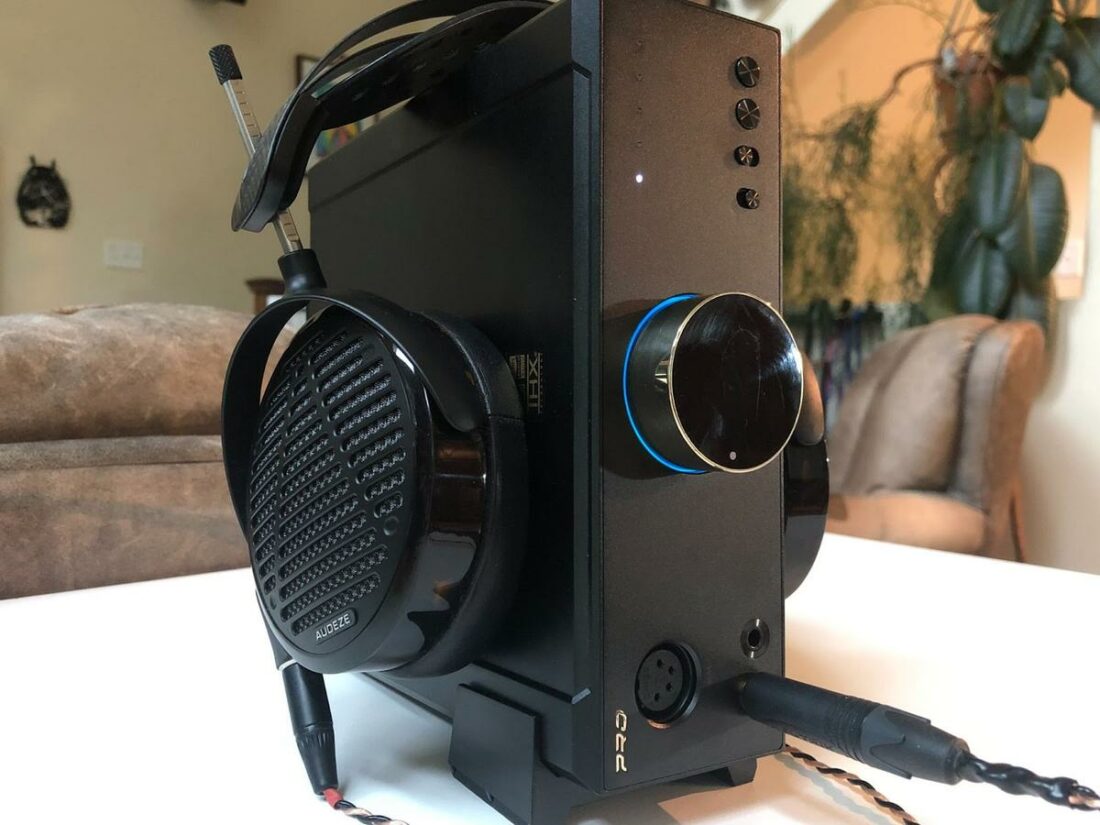
Where to Buy
Conclusion
Flexibility means being able to choose a single device and having it work with anything and everything you pair with it – be that a variety of sources, connection methods, or headphones. The average consumer doesn’t want to perform mental gymnastics to calculate the proper pairing for the best performance between myriad DACs, amps, and cans.
And therein lies the K9 Pro ESS superpower. It works very well, regardless of what you want to connect or listen to. Stop futzing around and get back to listening. That’s the point, after all.
May I say it’s damn near perfect? Whew, quite a claim.
But is there anything I’d change?
Doubling the power output would be nice, you know… just in case you really want to only listen to the HiFiMan HE6se headphones or their ilk. For the love of Pete, print the darn front panel labels in the same legible white font you use for the logos.
And someone out there will want a remote control and the highest resolution sampling rates.
But the majority of folks, with the majority of headphones and listening habits, will find the K9 Pro ESS just about ideal in every situation. And that impresses me. A lot.

Thanks for the review. I got one of these hoping to eventually move into planars. I’ve tried them single-ended with Beyerdynamic Amiron Home cans and Shure IEMs 846, as well as my favorite combo: AKG 501 (no longer in production since the 1990s). The sound is quite different from my Chord Mojo or Hugo 2, as well as my Audio GD Dac-19 (original R2R dac). I also plugged into my main system with SVS ultras and Naim amp. It’s very clear through the spectrum, with a lot of width and height to the soundstage (though perhaps not as much depth as the Chords). It’s very fast and I would almost say “light on its feet”. I need to experiment more with the balanced HP output, but I can say that this is a great all-in-one product. The Bluetooth seems better than the Chord Hugo 2, and my favorite thing so far is that it does MQA. I couldn’t tell any difference between my WAV 96/24 files with Foobar 2000 and the same MQA on Tidal. I’m still experimenting, but I think if you have good IEMs and/or balanced cables for good dynamic/efficient planars, probably this is going to hit the sweet spot. I think it is tuned for cans that already have some meat in the mid-range, which is why it worked best with my Shure’s and the AKG K501 – a notoriously warm timbred can. I didn’t immediately fall in love with the Beyer sound on this. It was almost too clinical for me.
Thanks for the feedback! It’s great to hear from people with lots of experience.
I purchased the K9 Pro. I love the sound qualities and how easy it is to connect source laptop or walkkman. I installed the fiio control app and it works well on my Apple phone. Great value for all it does. My iems really shine when paired with K9 pro. Headphones also sound much better. Excellent product.
Agreed! 🙂
What a terrible review. I came here with one question, can it also be used as a preamp? That’s some useful information and would have taken 10 seconds to include in this so called review.
Yes.
Review saved.
great response. Pretty sure that the usual Fiio LO connection was in the picture or did I imagine something?
Thanks? The back panel has both XLR and RCA analog line out connections.